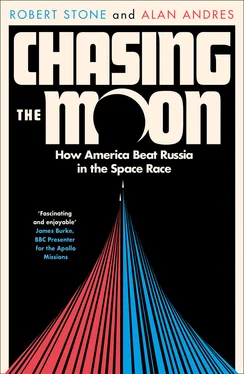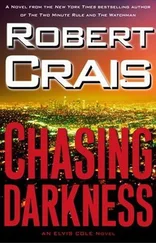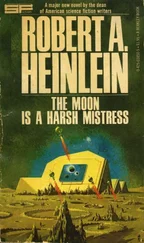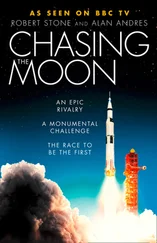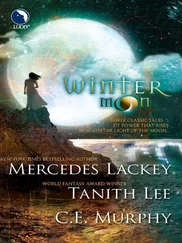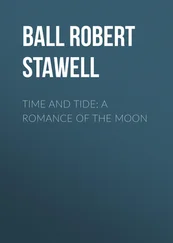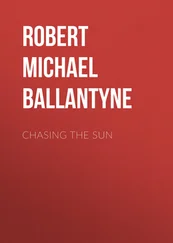A PLACE BEYOND THE SKY CONTENTS COVER TITLE PAGE COPYRIGHT DEDICATION For my mother, who awakened her ten-year-old son in the middle of an English midsummer night to watch Neil Armstrong and Buzz Aldrin make history as they walked on the Moon. —R.S. For Charlie, older brother and teenage rocket scientist, who, as the youngest accredited journalist covering the launch of Apollo 14, backpacked and hitchhiked 1200 miles to Cape Kennedy. — A.A. PROLOGUE JULY 16, 1969 CHAPTER ONE A PLACE BEYOND THE SKY (1903–1950) CHAPTER TWO THE MAN WHO SOLD THE MOON (1952–1960) CHAPTER THREE THE NEW FRONTIER (1961–1963) CHAPTER FOUR WELCOME TO THE SPACE AGE (1964–1966) CHAPTER FIVE EARTHRISE (1967–1968) CHAPTER SIX MAGNIFICENT DESOLATION (1969) CHAPTER SEVEN THE FINAL FRONTIER (1970–1979) APPENDIX AFTER A FEW MORE REVOLUTIONS AROUND THE SUN PICTURE SECTION ACKNOWLEDGMENTS NOTES INDEX ABOUT THE AUTHORS ABOUT THE TYPE ABOUT THE BOOK ABOUT THE PUBLISHER
(1903–1950) CONTENTS COVER TITLE PAGE COPYRIGHT DEDICATION For my mother, who awakened her ten-year-old son in the middle of an English midsummer night to watch Neil Armstrong and Buzz Aldrin make history as they walked on the Moon. —R.S. For Charlie, older brother and teenage rocket scientist, who, as the youngest accredited journalist covering the launch of Apollo 14, backpacked and hitchhiked 1200 miles to Cape Kennedy. — A.A. PROLOGUE JULY 16, 1969 CHAPTER ONE A PLACE BEYOND THE SKY (1903–1950) CHAPTER TWO THE MAN WHO SOLD THE MOON (1952–1960) CHAPTER THREE THE NEW FRONTIER (1961–1963) CHAPTER FOUR WELCOME TO THE SPACE AGE (1964–1966) CHAPTER FIVE EARTHRISE (1967–1968) CHAPTER SIX MAGNIFICENT DESOLATION (1969) CHAPTER SEVEN THE FINAL FRONTIER (1970–1979) APPENDIX AFTER A FEW MORE REVOLUTIONS AROUND THE SUN PICTURE SECTION ACKNOWLEDGMENTS NOTES INDEX ABOUT THE AUTHORS ABOUT THE TYPE ABOUT THE BOOK ABOUT THE PUBLISHER
THE BOOK IN the shop window caught the boy’s attention immediately. The vibrant purple dust jacket depicted a bullet-shaped machine trailed by an arc of orange flame. If there was any doubt in Archie Clarke’s mind what the illustration was intended to depict, the book’s title, The Conquest of Space, made it obvious. It was a spaceship. The captivating image reminded him of the colorful covers of the American science-fiction magazines that he had seen in the back room of Woolworth’s.
Spectacled fourteen-year-old Archie peered into the small W. H. Smith bookshop located a short distance from his grandmother’s house on England’s Bristol Channel. Dressed in short pants and an Oxford shirt, Archie was walking with his aunt Nellie toward Minehead’s main shopping arcade. It was 1932, and Archie had recently lost his father, after a long illness exacerbated by injuries sustained during a German poison-gas attack in World War I. He routinely visited his grandmother and aunt in the small but active southwest England beach resort during the weekends and holidays, leaving his mother freer to attend to his younger siblings on the remote family farm a few miles away.
Nellie Willis, a tall young woman with an intelligent face framed by a brown bob, doted on her clever nephew. She could see that the book displayed in the shop window fascinated him. Despite the family’s struggling finances, she gave Archie the “six and seven”—six shillings and seven pence—to purchase it and bring it home.
But when Archie opened the book, he discovered it wasn’t the adventure story that he had expected. Instead, he was looking at a book detailing the fundamentals of rocket science—astronautics—supplemented with an imagined account of the first journey to the Moon. Until this moment Archie had assumed space travel was a fantasy. Now he learned that it was actually possible for humans to leave their planet and explore space and that it could happen in the not-too-distant future.
Decades later, as one of the world’s leading masters of science fiction and the co-author of 2001: A Space Odyssey, Arthur C. Clarke would point to that day in 1932 as the moment his life changed. His imagination had been energized by a book, prompting him to wonder about what it might be like when humans began to explore space. In the early 1930s, few in government, media, or business regarded human space travel as a serious possibility. But in Archie Clarke’s mind it held transformative and liberating options. If the human species could escape the confines of gravity, was it conceivable that other fantastic possibilities might come to pass in the near future as well?
Archie’s fascination with the promise of space travel would motivate and determine the direction of his life following that chance encounter with The Conquest of Space. He joined a small cadre of visionaries, theorists, and space-travel advocates whose youthful dreams, curiosity, and determination led directly to humanity’s first steps on an alien world only three decades later.
The theoretical mathematics upon which all rocket science was based had begun to circulate in prominent scientific journals only a decade before the publication of The Conquest of Space. In the early twentieth century, three independent-minded theorists, intrigued by the idea of space travel after reading works of science fiction as adolescents, attempted to solve the theoretical physics necessary to carry out an actual escape from Earth’s gravity. Working autonomously, Russia’s Konstantin Tsiolkovsky, American professor Robert Goddard, and physicist Hermann Oberth in Germany conducted their research and study in each of the three countries that would later witness the most decisive events of the early space age. All three theorists were social outsiders intrigued by utopian ideals, and each harbored a personal belief that space travel would inevitably transform human destiny.
The first stirrings of the modern space age arose not in a wealthy industrial nation but in agrarian czarist Russia. At the turn of the century, a popular spiritual philosophy called cosmism—a mixture of elements from Eastern and Western thought, animism, theosophy, and mystical aspects of the Russian Orthodox Church—had influenced a new generation of writers, scientists, and intellectuals. For Russian cosmists, space travel would be the ultimate liberation; once the shackles of the Earth’s gravity had been removed and humans inhabited space, the souls of the dead would be resurrected and all humanity would partake in cosmic immortality.
The founding philosopher of Russian cosmism, Nikolai Fedorov, a noted librarian and scholar, chose to personally tutor a bright but impoverished teenager who had been prohibited from attending school due to severe deafness. The student, Konstantin Tsiolkovsky, had an eccentric and strikingly independent intellect and within a few years was hired as a small-town schoolmaster, despite his disability. In his spare time, Tsiolkovsky conducted independent research on many scientific subjects, including space travel. He had read Jules Verne’s From the Earth to the Moon during his adolescence, and later he even tried his hand at writing his own fictional scientific romances.
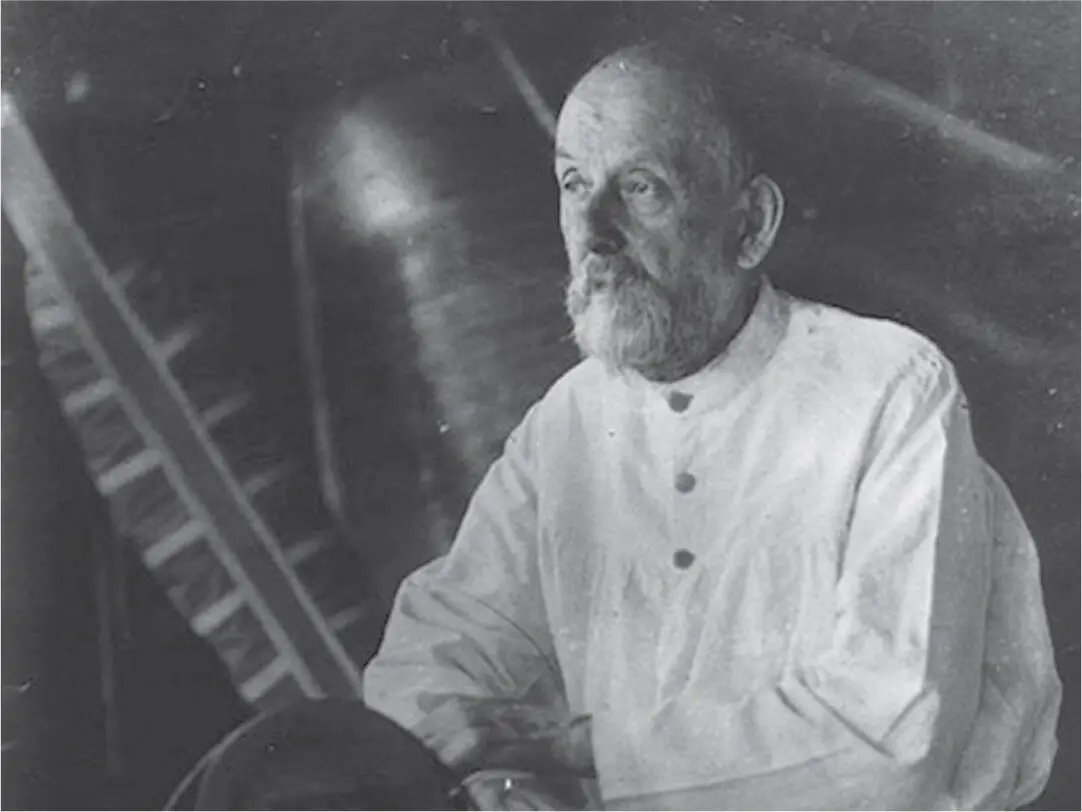
© NASA
Russia’s Konstantin Tsiolkovsky, a rural Russian schoolteacher whose 1905 paper first introduced the mathematical equation on which all rocket science is founded. A utopian, Tsiolkovsky believed that human space flight would lead to universal happiness. In a letter he wrote, “Earth is the cradle of humanity, but one cannot live in a cradle forever.”
In 1903 Tsiolkovsky published a scientific paper that contained the first appearance of what came to be known as the “rocket equation,” a mathematical formula comparing a rocket’s mass ratio to its velocity, the essential calculation necessary to determine how to escape a planet’s gravity. Unfortunately, the importance of his publication went unnoticed; the Russian scientific community ignored his work, dismissing it as the musings of an amateur. His paper would remain unread for another twenty years. Undaunted, Tsiolkovsky continued his studies, going on to publish nearly four hundred scientific papers on such matters as space-vehicle weightlessness, the operation of multi-staged launch vehicles, the orbital dynamics of differing rocket burns, and the scientific advantages of polar orbits.
Читать дальше
